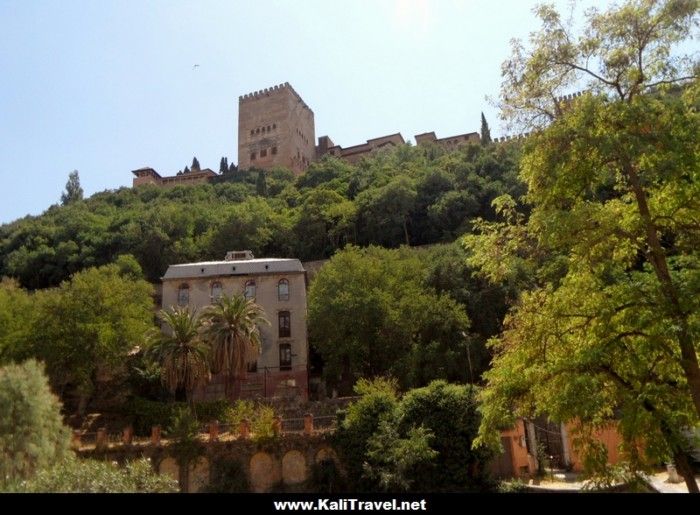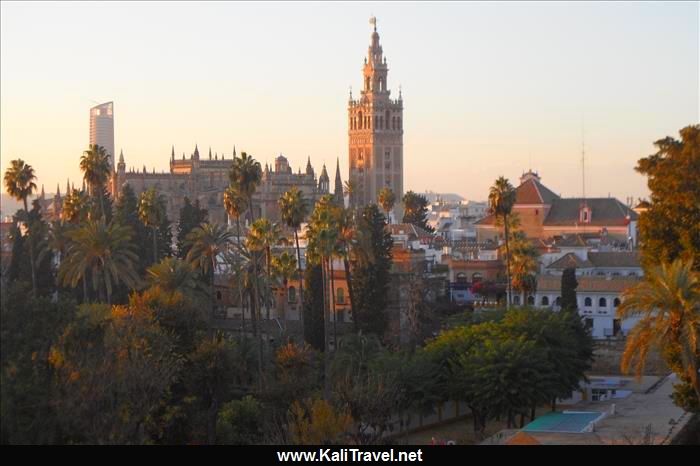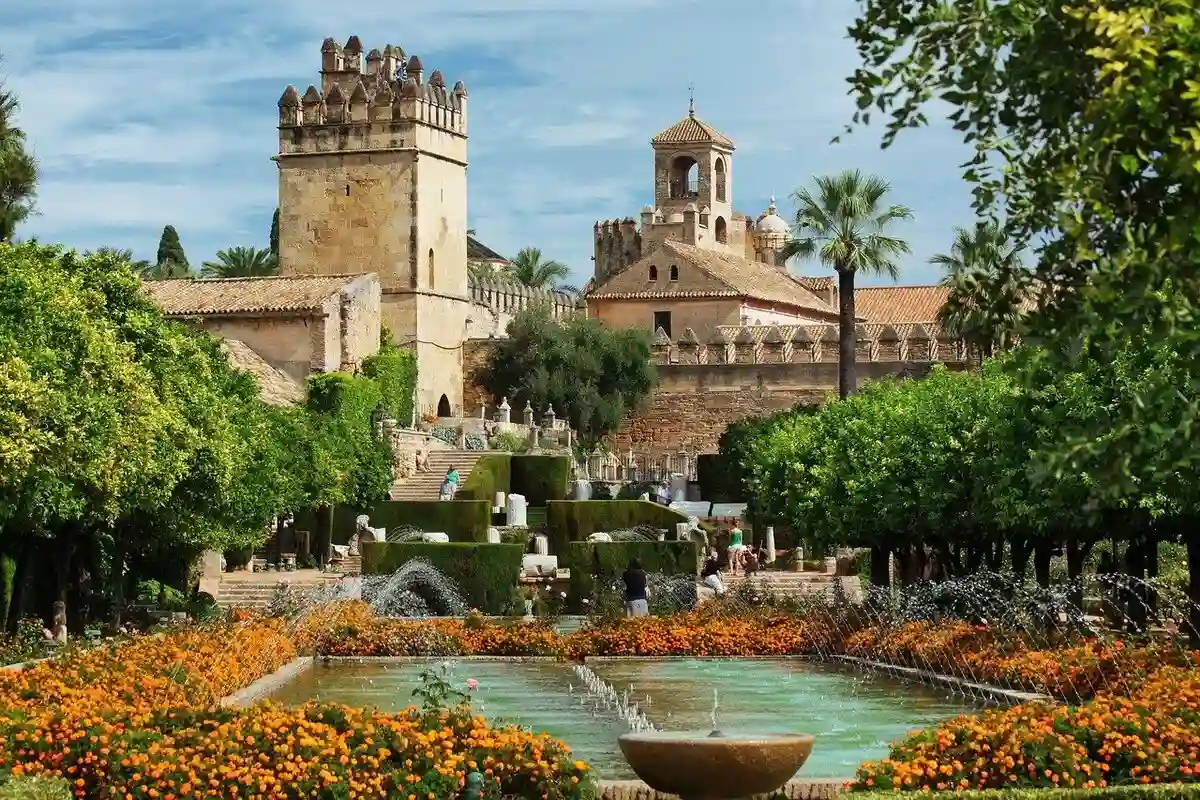A 3-day Lisbon itinerary, sightseeing in Portugal’s capital city and the iconic town of Sintra. How to see historic Lisbon and nearby places of interest in three days. One of the most scenic cities in Europe, Lisbon should be on everyone’s travel bucket list!
Portugal’s lively capital sits on seven hills in a spectacular setting overlooking the River Tagus estuary, and only 10 kilometres from the Atlantic Ocean. Every neighbourhood in ‘Lisboa‘ has its charm, so you’ll need at least 2 days to go sightseeing in the historic city plus an extra day to visit top places of interest nearby.
Curious about what to see? Keep reading our Lisbon 3-day itinerary, which includes a day trip to the beautiful town of Sintra and helpful tips to plan your own getaway.

Lisbon 3-Day Itinerary Highlights
- 1. Baixa (Downtown Lisbon)
- 2. Chiado and Bairro Alto
- 3. Alfama (Medieval Lisbon)
- 4. Belém and Cais do Sodré (Lisbon Riverside)
- 5. Day Trip to Sintra and Cascais
Planning a trip to Portugal and Southern Europe? SEE OUR HELPFUL GUIDES:
* Porto 2-Day Itinerary
* Visit Southern Europe in Winter
* 3-Day Guide to Granada
* Guide to Málaga and Costa Del Sol
The second oldest capital in Europe after Athens, Lisbon was founded by Odysseus according to Greek mythology! Legends apart, Lisbon certainly leaves a lasting impression that you’ll never forget.
Baixa district is the focal point, a monumental neighbourhood by Lisbon’s riverfront with huge open squares and boulevards. Historic trams and wrought iron elevators carry you up the steep alleyways to medieval districts which are buzzing with life.
On a riverboat cruise, you’ll see the Tagus suspension bridge and the tall statue of ‘Christ the King’ (inspired by the Golden Gate and Christ the Redeemer respectively), and famous Belém Tower from where the Portuguese explorers set sail centuries ago.
Lisbon 3-Day Itinerary
Local author Marga suggests a 3-day Lisbon itinerary for your first visit. Apart from enjoying the city itself, you’ll want to spend time in Sintra… yes, Portugal’s most iconic town is only 40 minutes away!
Lisbon Itinerary: Day 1
Monumental Baixa District
Baixa is the heart of downtown Lisbon, and the ideal place to start exploring. Officially Baixa Pombalina, the Marquis of Pombal rebuilt this waterfront district after the devastating earthquake of 1755, creating elegant plazas and the grand Avenida da Liberdade.

A Triumphal Arch presiding Praça do Comércio commemorates the tragedy, along with a bronze statue of King Joseph I on horseback. Lisbon’s broad main square is lined by classic Pombaline buildings on three sides, many with eateries and terrace cafés under the arcades.
The southern end of the plaza overlooks the Ribeira das Naus riverfront, and the Cais das Colunas rising from the water – the 2 ancient columns are a popular attraction at sunset viewed from the Miradouro do Rio platform.
Tram 28 and Lisbon Metro both stop at Praça do Comércio (Blue Line ‘Terreiro do Paço’ station). Before setting off to explore Lisbon, pop into the Ask Me Lisboa Tourism Office which is on the square too.
Pass under the archway into Rua Augusta main street, along to tree-lined Avenida da Liberdade and Eduardo VII Park just over 3 km away. It’s an easy stroll along wide pedestrian avenues of Neoclassical design filled with boutique stores and classy restaurants.

These are the must-see landmarks to look out for on your self-guided walking tour of Lisbon’s Baixa district:
Must-See Landmarks in Baixa
- Praça do Comércio is Lisbon’s iconic main square by the River Tagus riverfront;
- Lisboa Story Centre is an interactive visitors centre where you can relive the history of Lisbon;
- The Triumphal Arch has a lookout platform for the best views, and a light show on summer evenings;
- Cais das Colunas are the 2 monumental columns on sunken marble steps in the river;
- Rua Augusta is Lisbon’s pedestrian main street flanked by pavement cafés and exclusive boutiques;
- Praça da Figueira is a busy square lined with cafés, and a view up to Lisbon Castle;
- Santa Justa Lift is an open-air wrought iron elevator that connects lower and upper Lisbon. The 45 metre high tower was constructed in 1902 in true ‘Eiffel Tower style’.
- The Rossio (Praça de D. Pedro IV) is Lisbon’s historic public square. Features include the wavy cobblestone paving, a tall column of King Pedro IV and ornamental fountains, the National Theatre, and the sculptural façade of Rossio railway station.
- Praça dos Restauradores is the city square with a huge obelisk commemorating independence from Spain. Features include the Renaissance-style Foz Palace, the Art Deco Eden Cinema, and Lisbon Hard Rock Cafe!;
- Glória Funicular is a quaint tram-like carriage that runs up an impossibly steep and narrow street, from Praça dos Restauradores to Miradouro Sao Pedro in Bairro Alto;
- Avenida da Liberdade is the impressive tree-lined avenue that connects Praça dos Restauradores to Eduardo VII Park.

From the top of Avenida da Liberdade, there’s a pleasant walk up through Parque Eduardo VII Park to Amália Rodrigues Gardens for vistas over the city.
Day 1 itinerary depends on your arrival in Lisbon:

- If you arrived last night and have the full day to sightsee, spend the morning in Baixa then take the Santa Justa Elevator from Baixa district up to Chiado. Bear in mind that this peculiar lift is a top tourist attraction and there are usually queues for the upward trip. From Chiado it’s a short walk to Barrio Alto, if you’re looking for some nightlife later on.
- However, if you’ve just arrived today, the best itinerary to keep within a shorter timeframe would be to spend the afternoon in Baixa and then ride the Glória Funicular from Praça dos Restauradores up to Miradouro Sao Pedro in Bairro Alto for an evening out.
Chiado and Bairro Alto
Chiado Neighbourhood
Chiado is the fashionable district on the western hill overlooking downtown Baixa and the Tagus River. Traditionally frequented by the culturally elite, you’ll find Lisbon’s opera house here, the coffeehouses where intellectuals met in bygone eras, and the most ancient bookstore in the world.

There are lots of smart shops to browse and a great choice of eateries, including Lisbon’s oldest restaurant, the opulent Restaurante Tavares.
Fancy a sweet treat on the go? Manteigaria bakery makes the best pastel de nata custard tarts in town! If you prefer to sit down for coffee and cake in an old-fashioned café, try A Brasileira on Praça Luís de Camóes (the popular square that divides Chiado from Bairro Alto).
Bairro Alto
Bairro Alto is the bohemian quarter, a maze of cobbled streets and steps leading down alleyways, where you’ll discover hundreds of trendy little bars, and restaurants serving authentic Portuguese food. It’s the best place to enjoy a lively night out in Lisbon.

Book a table at a Fado Club for dinner and listen to the soulful lyrics of a solitary singer accompanied by the strains of Portuguese guitar and a 6-stringed viola. Have fun bar-hopping the night away, but don’t forget there’s more of Lisbon to explore in the morning!
Must-See Landmarks in Chiado and Bairro Alto

- Elevador da Glória is the little funicular that connects Bairro Alto to Baixa;
- Miradouro de São Pedro de Alcântara has panoramic views from the terraced gardens over downtown, across to Lisbon’s Castle and Cathedral on the facing hill. Come here at dusk as the city lights come on and admire the floodlit monuments;
- Igreja de São Roque is a 16th-century church (originally one of the oldest Jesuit churches in the world). The white façade hides a sanctum of richly decorated Baroque chapels and reliquary altars;
- Elevador Santa Justa is the iron tower lift that connects Chiado to Baixa);
- Carmo Convent ruins and archaeological museum, near the top entrance of Santa Justa lift, are reminders of the great earthquake.
- Igreja de São Domingos is a National Monument dating to the 12th century. St. Dominic Church has been damaged several times over the ages and rebuilt to the actual Baroque appearance;
- Praça Luís de Camóes is a busy square with a monument to the classical author;
- Teatro Nacional de São Carlos (São Carlos National Theatre) is Lisbon’s 18th-century Opera House;
- Livraria Bertrand is the oldest bookstore in the world;
- Miradouro de Santa Catarina has stunning views over the Tagus River, especially at sunset;
- Elevator da Bica is a cable railway funicular, a 1 minute ride down to Cais do Sodré and downtown.

Visiting Lisbon in June? There are street parties all over the city to celebrate the Festas dos Santos Populares, especially around the Bica elevator and the Alfama neighbourhood.
Lisbon Itinerary: Day 2
Lisbon Tourist Tram 28

Tram 28 is the classic way to get around Lisbon historic centre, it’s been operating since the 1930s! A fun experience in itself, a ride aboard the rattling yellow carriage is an easy way to see the major sites and to get up those hills! It makes a pocket-friendly, self-guided city tour.
The 7 km itinerary along the historical tram track begins in Praça Martim Moniz Square in downtown Lisbon, and runs through Graça, Alfama, Baixa, and Estrela neighbourhoods (then turns back along the same route).
Being the well-known line, Tram 28 tends to fill up quickly with tourists. If there’s a queue to get on, Tram 12 is a convenient alternative. This is a shorter, circular route from Martim Moniz Square to Graça, Alfama, and Baixa districts.


Either buy a single ticket from the tram driver as you board, purchase a prepaid Lisboa Card, or a 24-hour public transport pass which is valid for all Lisbon Trams, the Metro, local buses, as well as urban trains to Sintra and Cascais (get the 24 h ticket from machines at subway stations).
Information on Lisbon Transport Tickets >>>
Historical Alfama District
The oldest neighbourhood in Lisbon, Alfama is a good start to your day 2 itinerary. The narrow cobbled streets twist up from the riverfront to São Jorge Castle at the top of the hill, where there’s a panoramic vista over the city. Other viewpoints on Lisbon’s highest hill are Miradouro da Graça, Miradouro de Santa Luzia, and Miradouro das Portas do Sol.

Once a humble fisherman’s district, the Alfama is now trendy and chic. Wander around the alleyways of prettily tiled and pastel-coloured houses, browse the craft shops, and stop for a coffee at a street café in Largo do Chafariz de Dentro – a small plaza with an ancient fountain where the Fado Museum is located.
A genre internationally acclaimed on UNESCO’s Intangible Cultural Heritage List, Lisbon Fado music originated in the Bairro Alto and Alfama neighbourhoods in the 1820s. The haunting melodies were sung by sailors’ wives yearning for their men to return safely from sea.

Must-See Landmarks in Alfama
- Castelo São Jorge is a distinctive feature on the skyline. Lisbon Castle has been watching over the city since the 11th century. Walk along the medieval battlements to capture the picture-perfect scene of the old town below;
- Sé de Lisboa is Lisbon’s XII century cathedral and the oldest church in the city;
- São Vicente de Fora Monastery dates back to the XVII century. The cloisters of São Vicente de Fora church are decorated with unique blue and white baroque tile panels depicting the history of Lisbon and the fables of La Fontaine. This is also the burial place of the Brazanza Monarchs;
- The National Pantheon is the monumental building crowned with a dome. Originally conceived as the Church of Santa Engrácia, it now houses a mausoleum with tombs of national celebrities;
- Feira da Ladra Thieves Market is the traditional flea market held on Tuesday and Saturday mornings.
Suggested Itinerary to Alfama:
Get Tram 28 or Tram 12 to Miradouro da Graça and walk downhill to Alfama, then continue down through the maze of little streets towards Lisbon riverfront.
Belém and Cais do Sodré
Ribeira das Naus waterfront promenade reaches from Praça do Comércio square to the Cais do Sodré neighbourhood, a pleasant 10-minute walk away.

Finding it difficult to choose somewhere for lunch? To keep things simple, Time Out Lisbon is the perfect solution.
Some 50 gourmet ‘snack bars’ overseen by Lisbon’s top chefs are conveniently curated under one roof, the Mercado da Ribeira fresh food market, located here in the Cais do Sodré. Sample Lisbon’s finest food and international cuisine in the laid-back atmosphere – they also do cooking classes but, if pushed for time, you can always look up the recipes online at home.
Continue your afternoon itinerary westwards, following the River Tagus towards Lisbon’s most famous landmark, the Tower of Belém.
How to get to Belém
Tram 15E runs almost parallel to Lisbon riverfront. The Sul e Sueste tram stop is close to Lisbon Cathedral, so (depending on where you’ve lunched) either board the tram here in Alfama, at Praça Comercio, or at Cais do Sodré.
This is a modern articulated tram that goes to the Belém district in western Lisbon, along a route that follows the northern bank of River Tagus past the Ponte 25 de Abril (a red suspension bridge that straddles the river, looking just like San Francisco’s Golden Gate).
You can stop off to visit the FX Factory (a reinvented historical industrial complex that has been turned into a hip area full of independent shops and cafés in the Alcântara district), the Quake, Tejo Power Station and MAAT Museums, and Jerónimos Monastery, on the way to the Belém Tower.

Visiting the Sites in Belém
You’ll need the whole afternoon in Belém, to wander around and appreciate the main points of interest.
Monastery of the Jerónimos is a UNESCO World Heritage Site built in the 16th century (also known as Monastery of the Hieronymites). One of Lisbon’s top attractions, Gothic-style Mosteiro dos Jerónimos now houses the National Archaeology and Maritime Museums.
The adjoining Church of Santa Maria is the final resting place of Vasco da Gama, Portugal’s famous explorer who set sail in 1497 on the first discovery voyage to India from the port of Lisbon. Visiting the church is free of charge, but an entrance ticket is needed to see inside the monastery itself (best booked in advance to save queuing).

Praça do Império Gardens lie in front of Jerónimos Monastery, a landscaped park with water features and mythological seahorse statues (hippocampi). The Tropcal Botanical Gardens and Afonso de Albuquerque Gardens are in the same area.
A couple of streets away, Pastéis de Belém is the famous bakery that makes the authentic Lisbon custard pastries using a secret recipe handed down through the ages by the Hieronymite Monks who lived in the monastery.
Padrão dos Descobrimentos is the Monument of the Discoveries, dominates the riverside near Belém leisure harbour. The massive sculpture depicts the bow of a caravel sailing ship, and Henry The Navigator flanked by 32 Portuguese dignitaries from the Age of Discovery era.

Belém Tower is part of the same UNESCO World Heritage Site as the Monastery of the Hieronymitesas, both ornately crafted in Manueline architectural style. The 16th-century landmark fortress was constructed to defend the Tagus Estuary and became a symbol of Portugal’s power.
Once again, you need a ticket to go inside. It’s worth climbing the tower’s spiral staircase to the rooftop terrace 4 storeys above for the views alone.

Instead of catching the tram back to the historical centre of Lisbón, get the riverboat from Belém to Cais do Sodré, at the end of the afternoon to watch the sun setting over the Tagus. You’ll sail under the red suspension bridge and will see all the monuments as you glide by.
Museums in Lisbon
Although it doesn’t rain in Lisbon that often, if the weather’s wet and drizzly, visiting the museums in Belém is a good way to spend an afternoon.
- Lisbon Coach Museum has one of the biggest collections of horse-drawn carriages in the world, including those used by the Portuguese Royalty and other wealthy families throughout history;
- MAAT is the Museum of Art, Architecture, and Technology;
- The Electricity Museum is housed in the old Tejo Power Station;
- Museu Coleção Berardo art museum has collections of modern and contemporary art by artists such as Pablo Picasso, Salvador Dalí, Joan Miró, Andy Warhol, Jackson Pollock, and Francis Bacon;
- Quake is one of the newest museums. Travel back to 1755 and relive Lisbon’s great earthquake. The immersive attraction contains simulators, video mapping, and interactive 4D technology.
Suggested Itinerary to Belém:
Take the tram from Cais do Sodré to Jerónimos Monastery, walk through Praça do Império Gardens to the Monument of Discoveries by the riverside, then stroll on to the Tower of Belém.
Get a boat back up River Tagus, and under the iconic red bridge, to Cais do Sodré. Enjoy seeing all the sites from a riverboat at sunset.
Must-See Landmarks in Belém, Alcântara and Cais do Sodré
| 1. Tower of Belém | 4. Praça do Império Gardens | 7. FX Factory |
| 2. Padrão dos Descobrimentos Monument | 5. Tejo Power Station Museum | 8. Pink Steet |
| 3. Jerónimos Monastery | 6. Ponte 25 de Abril | 9. Elevador da Bica |
Cais do Sodré

Cais do Sodré is the harbourside neighbourhood below Chiado, and only a few minutes walk from Praça do Comércio.
Years ago a dodgy dockyard district, it’s since been glammed up and is now a popular place to party all night, especially the bars and clubs along Pink Street. Currently, this is one of the most instagrammable places in Lisbon!
Otherwise, board the vintage Elevador da Bica funicular to Bairro Alto and chill out on the terrace of a rooftop restaurant. Skip a late night if you’re only in Lisbon for 3 days and want to visit nearby places of interest too!
Lisbon Itinerary: Day 3
Day Trip Itinerary from Lisbon to Sintra
On day three of your Lisbon itinerary, make an early start for a day trip out of the city to the rural magnificence of Sintra-Cascais Natural Park. While there might not be time to walk the mountain trails, you’ll be able to visit the iconic sites in Sintra itself, squeeze in a quick visit to Cabo da Roca (the most western point of mainland Europe), and stroll around the cute seaside resort of Cascais.
After breakfast, take the train from Rossio Station to Sintra, a picturesque town located on the Portuguese Riviera, just 40 minutes outside of Lisbon.
Sintra UNESCO Sites
Not surprisingly, UNESCO features the Cultural Landscape of Sintra on the World Heritage List.
Pena Palace
Sintra is a special place, known for its romantic palaces and castles. You’ll realise why it’s so famous when you get your first glance of the Pena Palace which overlooks the town!
The extravagant hilltop Palácio Nacional da Pena is one of the most visited sites in Portugal. Once the summer residence of the Portuguese royal family, the flamboyant colours of this fairytale palace can be seen from miles around.

A mix of whimsical architectural styles, the fantasy palace was created over the ruins of a legendary monastery, by King Ferdinand II back in the 1800s. Unusual features include gargoyles and mythological creatures, a sundial cannon clock, and an array of towers, turrets, and archways!
An exotic park surrounds the property, where you can walk along tree-shaded paths to grottos, and lakes, and camellia gardens.
Book tickets entrance tickets for the Palace of Pena well in advance, as it’s a magnet for tourists. Try to get an early time slot to visit the palace and gardens, and then arrange the rest of the day around this.
It’s a strenuous walk up to Pena Palace and the Moorish Castle but you’ll be richly compensated by the panoramic views.
Castle of the Moors
Castle of the Moors is another of Sintra’s landmarks. The Castelo dos Mouros has stood on the rocks in a strategic position high above Sintra since the 8th century. Christian Crusaders ousted the Moors and the castle was left in ruins for centuries until King Ferdinand II saw it! Adjoining the Pena Palace grounds, it was partly restored as a focal point.

Climb the ancient towers, walk the battlements and admire the vistas over to the coastline before heading back down to Sintra old town for lunch.
Quinta da Regaleira
In the afternoon, visit Quinta da Regaleira, a gothic-style mansion dating to the early 1900s, renowned for its exhuberant gardens, caves, and underground tunnels. One of UNESCO’s most eerie listings, the estate was built by an eccentric businessman inspired by the Templar Knights, and the esoteric traditions of the Masons.

The palace itself is a mix of Gothic, Renaissance, and Manueline styles and features intricate carvings, stained glass windows, and beautiful frescoes.
However, the highlight at Quinta da Regaleira is the Initiation Well which is 27 metres deep. Stone stairs spiral down to a platform at the bottom where secret ceremonies were conducted. This represents the underworld and is filled with occult and mystical symbolism.
You can book a guided tour to learn more about the Freemasons, and the hidden messages and spiritual meanings held within. It’s a rather spooky experience!
Sintra National Palace
Palácio Nacional de Sintra is the incredible white palace with 2 enormous conical chimneys, in the heart of the old town. Originally built by the Moors in the 11th century, it’s one of the few medieval palaces still standing in Europe and is even older than the Alhambra in Spain.

Much of the interior is panelled with a priceless collection of Mudejar and Baroque tiles. Stroll through palatial quarters decorated with antique furnishings to the Throne Room, Arab Room, and Music Room.
Pena Palace, the Moorish Castle, Quinta da Regaleira, and Sintra National Palace are top tourist attractions and can get very busy.
A guided tour from Lisbon is another option and offers the chance to visit Sintra in combination with Cabo da Roca, the most western point of mainland Europe, and the seaside resort of Cascais on the same day trip.
If you prefer to set your own pace and wander at ease, it’s simple to do this round trip from Lisbon on public transport.
Cabo da Roca
And after a mesmerising day in Sintra, you can head over to Cascais for dinner. Take a detour along the way to Cabo da Roca, which literally translates to ‘Cape of the Rock’, the most westerly point in continental Europe. This really is ‘Land’s End’!

Some 18 kilometres west of Sintra, it only take 30 minutes by car or bus to get here, along a scenic route through Sintra-Cascais Natural Park.
Spend a few minutes watching the waves roll in from the Atlantic Ocean and amble along to the lighthouse on the cliffs, which has been guiding sailors for centuries. Pop into the gift shop or have a coffee while you’re waiting for the half-hourly bus, to continue around the coast to Cascais.
Cascais
A coastal village with a long fishing tradition, in the 19th century Cascais became fashionable as a summer retreat for the Portuguese aristocracy. It’s now one of Portugal’s top holiday resorts. The combination of ornate villas, sandy beaches, a glamorous marina, an ancient citadel fort, and the historic quarter, are part of the attraction.

Follow the path around the headland to Boca do Inferno, an archway carved into the cliffs by the incessant waves crossing the Atlantic. Watch the sun setting over the ocean against this awesome backdrop and click a few photos before turning around for dinner.
With lots of eateries in the cobbled plazas of the old town, by the marina, and on the seafront – from traditional tavernas to sophisticated restaurants or laid-back beach bars – it can be a hard choice deciding where to dine!
Look for a waterfront terrace and indulge yourself by ordering a platter of locally-sourced seafood or a fish and prawns cataplana. Accompany with a glass of white Bucelas wine, from the Lisbon vineyards.
Cascais beachfront boulevard leads to the lively resort of Estoril 3 kilometres away. This makes a pleasant evening stroll, and a lovely way to end your day trip, as you can get the train straight back to Lisbon from Estoril’s railway station (easy to spot from the promenade).
Suggested itinerary for a Lisbon-Sintra-Cascais daytrip:
Train from Lisbon Rossio Station to Sintra Train Station (and bus terminal); bus nº 1624 to Cabo da Roca and around the headland to Cascais (1 hour); train from Cascais to Lisbon Cais do Sodré Station (40 minutes).
* Tourist bus 434 runs from Sintra train station to the old town, Pena Palace, and the Moors Castle.
** Bus 1623 goes directly from Sintra to Cascais (30 minutes).
The Lisbon to Sintra to Cabo da Roca and Cascais back to Lisbon road trip itinerary takes around 2 hours without stops by car (approximately 90 km). Traffic is restricted in Sintra, so park by the train station (the pocket-friendly ‘Park & Ride’ scheme gives to a free bus ride into the town).
An ideal plan would be to use public transport and stay in Sintra overnight if you can fit in another day into your itinerary.
It may be a long day, but it’s really worthwhile taking the time to see Sintra while you’re staying in Lisbon.
Lisbon Itinerary Practical Tips
As you’ll discover, Lisbon is a beautiful city with a rich cultural heritage and dozens of must-see sights. Using this rough itinerary, you can cover a lot of ground in only three days.
Insider tip:
If possible, visit Sintra during the week and purchase entrance tickets to the main sites in advance, as the town is packed with sightseers at weekends and local transport is typically busy.
Finally, if you’re in Lisbon for longer, I suggest taking trips out to other places of nearby interest – Óbidos, Fatima, Évora, and Nazaré are my favourites.
Enjoy your time in Lisboa!
How to Get to Lisbon
Lisbon International Airport (LIS):
Lisbon airport is 20 minutes from the city centre by Metro. There is a subway station in Terminal 1.
*If you’re departing on a low-cost carrier from Terminal 2, get the shuttle bus between terminals (takes 3 minutes).
Getting to Lisbon by train:
The fast train from Porto (Campanha Station) to Lisbon (Oriente Station) takes 2 hours 50 minutes.
Getting to Lisbon by road:
- A1 is the direct motorway to Lisbon from the North of Portugal and North West Spain;
- From Porto, it’s roughly 3 hr 15 min via A1 (315 km). The scenic coastal route via A17 and A8 can take a little longer depending on traffic (325 km). From Tui on the Spanish border, it takes around 4 hr 30 min via A1(434 km);
- A6 links Lisbon eastwards to Evora (1 hr 45 min / 140 km), and Badajoz in Spain (225 km);
- A2 runs southwards to the Algarve (Albufeira 2 hr 35 min / 260 km), and Ayamonte on the border with Spain’s Andalucia region (333 km).
Generally, if you’re travelling from Spain to Lisbon, it’s much quicker and can be cheaper to fly. Seville is roughly 450 km from Lisbon by road, and Madrid is over 600 km away, for example.

About the Author
Meet Marga, a travel writer and photographer who used to be a flight attendant and travelled extensively for many years. After settling in Portugal, she started the Discover Portugal blog with insightful and engaging travel stories.
Places to Combine with a Trip to Lisbon
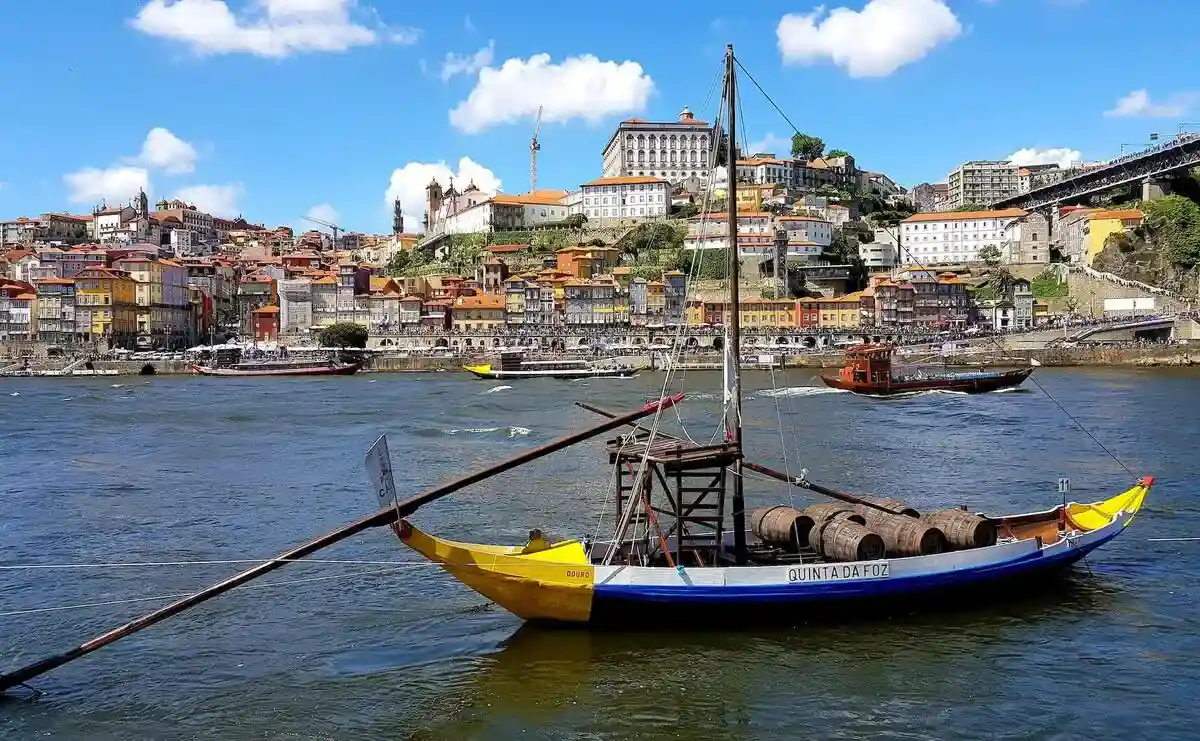
Are you thinking of spending 2 days in Porto? Our Porto Itinerary explains how to see this beautiful World Heritage City on your next trip to Portugal.
Visiting Spain and only 3 days to see Granada? Our ultimate Granada guide explains how to see the historical city sites, and the top things to see and do.
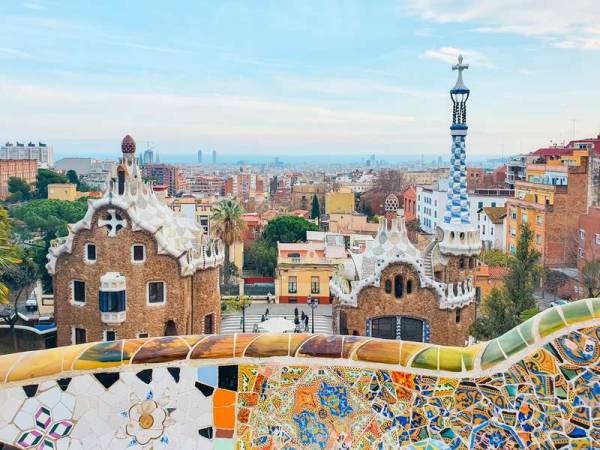
Barcelona city is an open-air museum with a multitude of fascinating things to see. Follow our Barcelona 2 day itinerary through the historic quarter down to the fashionable seafront boulevard.
The panoramic view from our bedroom terrace at Hotel Alcázar was stunning – Seville skyline was backlit by the sunset, the unmistakable Giralda tower and a dozen church spires piercing the sky.
Córdoba historic centre is a UNESCO World Heritage City in Southern Spain. Here’s our choice of 25 sites to see and the top things to do when you visit Córdoba.
Discover the World with![]() the blog with a focus on independent travel
the blog with a focus on independent travel




